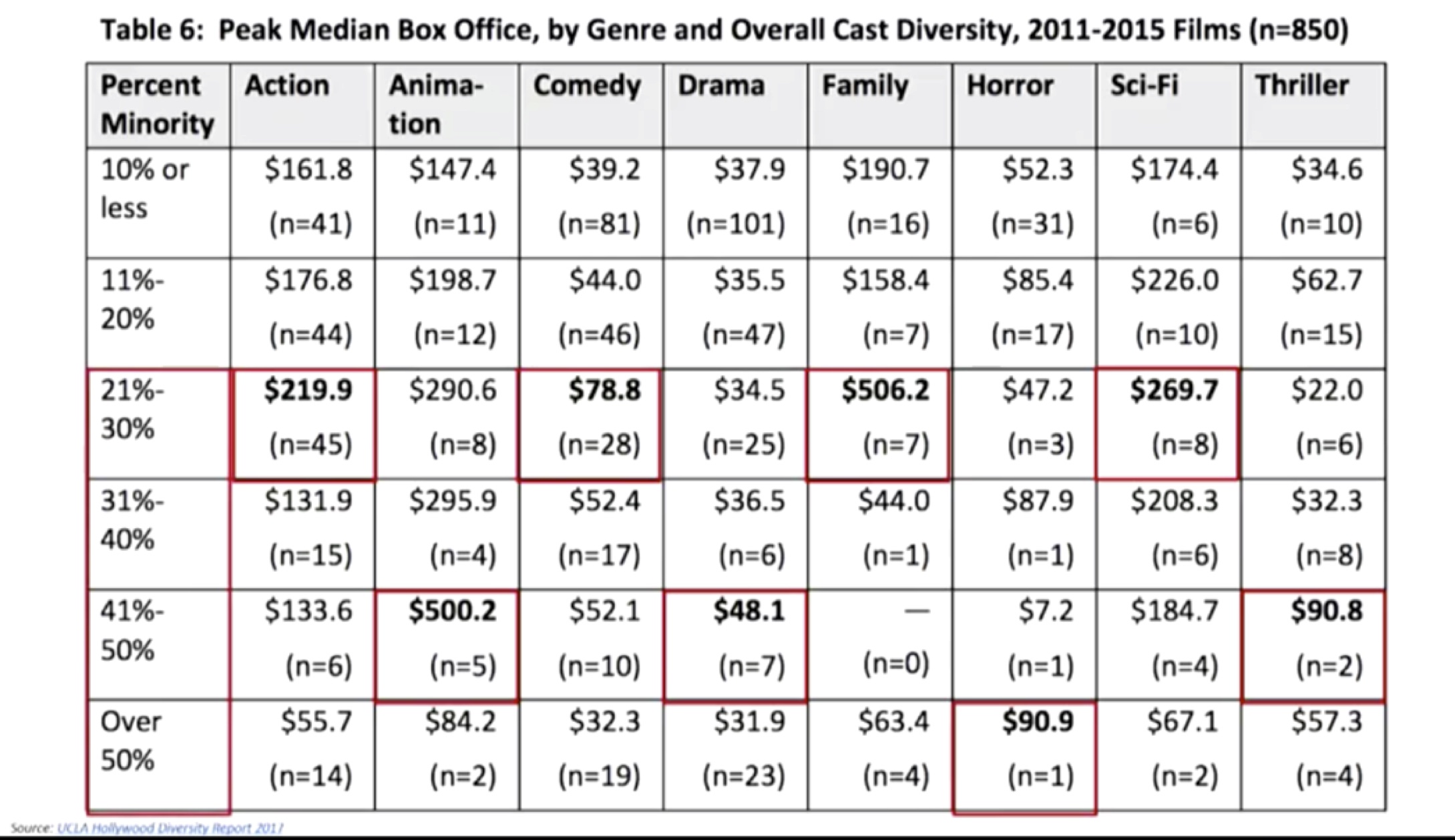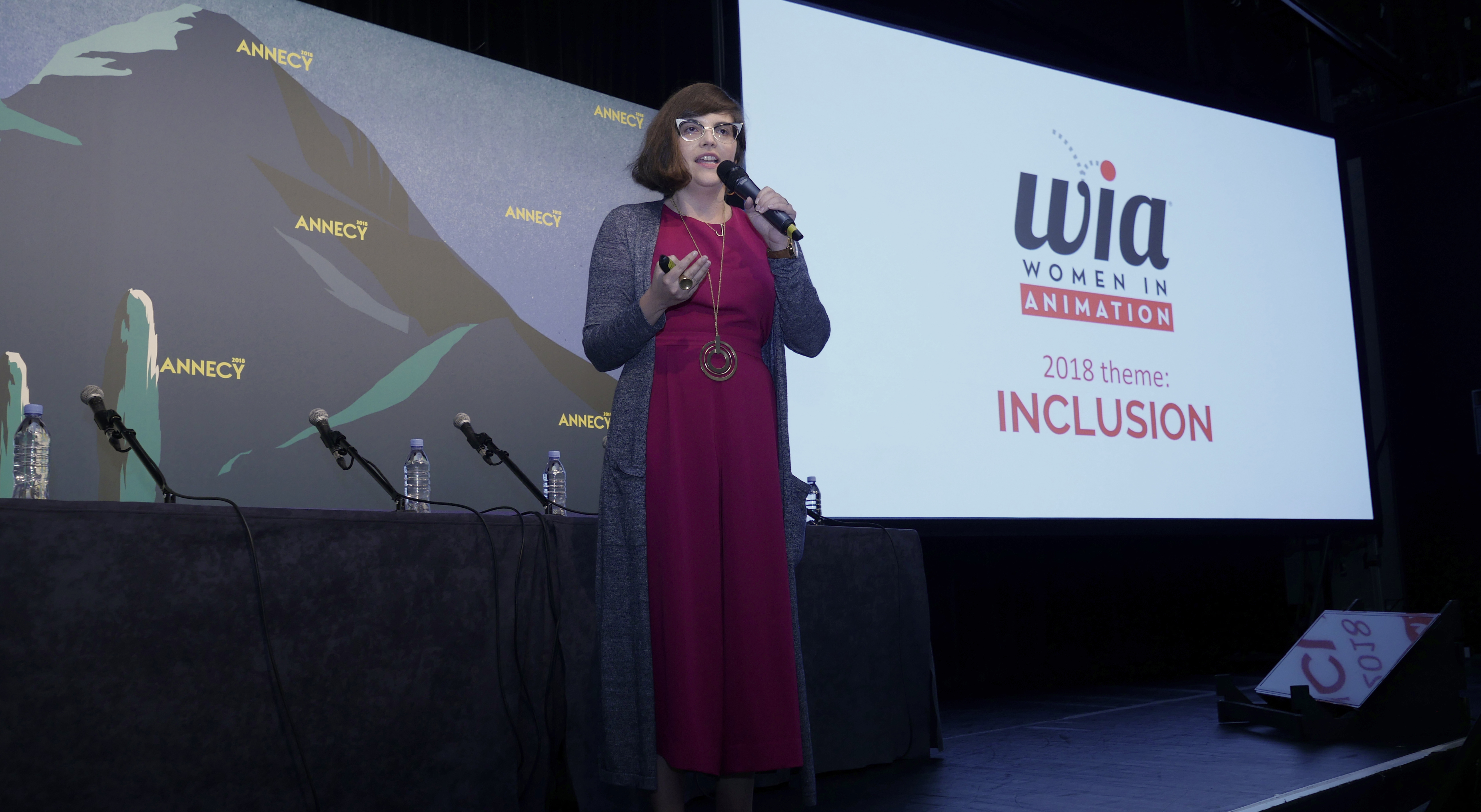Women In Animation: Julie Ann Crommett on Highest Returns Coming from Cast Diversity
By Emilio Mayorga
LOS ANGELES (Variety.com) – ANNECY, France—The 2nd Women in Animation World Summit kicked off on Monday with an introductory master-class about “Inclusion and Intersectionality” by Julie Ann Crommett, VP of multicultural engagement at Walt Disney Studios.
Marge Dean, head of studio, Ellation, Inc., and the WIA president, pointed out in her Summit presentation: “The world has changed a lot since last year. Last year was a real turning point for everyone, and I think the biggest change was that people started to listen to women and believe in them.”
In a sharp, brisk speech, Crommett, who has Cuban and Puerto Rican roots, drew on the example set by her grandfather, Paco Pardo – an actor, movie reviewer and early tech geek, who inspired her to pursue a path in animation – to make a case for greater diversity. “We don’t have to choose between different parts of our identity,” she said. “We have to choose between different parts of our passion.”
Revisiting some of the key talking points from the previous Summit, Crommett focused on unconscious bias, which results from the shortcuts the brain takes in order to quickly process large amounts of data. Subjecting the audience to a series of psychological tests, she illustrated how unconscious assumptions could affect memory and beliefs, which in turn impacts the decision-making process. “Even a tiny bit of bias could have big consequences,” she said.
Crommett also focused on inclusion, which she said harnessed the power of differences and similarities to achieve a common goal, and intersectionality, which “considers that the various forms of what one sees as social stratification, such as class, race, sexual orientation, age, disability and gender, do not exist separately from each other but are complexly interwoven.”
If last year’s central theme was “unconscious bias” and this year’s Summit is devoted to “Inclusion and Diversity,” the big issue for next year will be “Belonging.” To illustrate the differences, Crommett noted: “Diversity is being invited to the party, inclusion is being asked to dance, and belonging is that your music is playing, and you can boogie.”
Drawing on research done by the USC Annenberg School for Communications and Journalism Inequality and by UCLA, the Disney exec presented stark data about gender and race integration in Hollywood and across the world.
The figures suggest that women on-screen are often seen, not heard: just 34% of speaking roles are given to women – only 31% in animation – and just 3% to women of color. Overall, 71% of on-screen characters are white, though in animation, that number dips to 51%, due to the influence of foreign fare like “Viana” and “Kubo and the Two Strings.”
In U.S. scripted cable series, the stats are slightly better, with 42% of speaking roles written for women, and 12% for women of color.
In leading positions such as directing, the situation is substantially worse: in 2016, just 4% of the directors of top films were women, and less than 1% women of color. Creators of U.S. scripted cable TV shows didn’t fare much better: 17% are women, while a whopping 93% of the total are white. Worldwide, according to the Geena Davis Institute’s Gender Bias Without Borders Report, 21% of filmmakers are women.
Despite the avalanche of negative data, Crommett cited comScore/Screen Engine sources from the MPAA 2016 Theatrical Statistics Report, which showed that the gender ratio among viewers is more proportionate. In the case of “The Secret Life of Pets,” the audience split was 46% men and 54% women; for “The Jungle Book,” it was 48% to 52%. The survey average of top grossing films was split right down the middle, 50-50.
Crommett concluded with an example she called “one of my favorites,” illustrating how gender parity boils down to revenues as much as rights. Animated movies with a 41%-50% ratio of diversity in casting, she noted, were the most successful at the global B.O., according to UCLA’s Hollywood Diversity Report 2017. Independent of genre, the highest returns come with titles including a 20% or better ratio of cast diversity.
In the introduction to the symposium, Mickaël Marin, managing director of Citia – and, starting July 1, the next Annecy fest organizer’s CEO – reaffirmed the fest’s commitment to gender equality with the Summit project and its push for representation in the industry. Marin, who will on Tuesday give the 2018 Mifa Animation Industry Award to WIA, also announced and presented the new head of Mifa, Véronique Encrenaz, the first woman to hold this position.
The event was organized by Women in Animation (WIA) and Les Femmes s’Animent (LFA), in partnership with the 2018 Annecy Int’l. Animation Festival and Mifa. The sponsors included DreamWorks Animation, Netflix, Walt Disney Animation Studios, Blue Sky Studios, Paramount Animation, Pixar, Sony Pictures Animation, Warner Animation Group, Warner Bros. Animation, the Centre National du Cinema et de l’Image Animée, Cube Creative Productions, Cyber Group Studios, Piste Rouge, SACD, SPFA, TeamTO and 22D Music Group.


